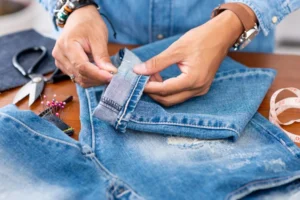In the wake of the growing climate crisis, more people are turning to sustainable solutions in all aspects of life—including fashion. More than ever before, there is an increased focus on green fashion and how it can increase sustainability while still keeping up with current trends. In this blog post, we’ll explore all things green fashion: from what materials are used and why they are chosen to tips for creating a stylish wardrobe without harming the environment. Let’s get started!

Invest in quality pieces that will last longer
Investing in quality pieces is an investment in your future. It is well known that quality lasts longer. When it comes to clothes and other items that you use every day, investing in durable materials and craftsmanship can save you time and money in the long run. It is easy to be seduced by fast fashion and cheap alternatives, but the thrill of a quick purchase fades quickly when the item falls apart after a few uses. Quality pieces, on the other hand, age well and become more valuable over time. They can be passed down through generations, and their timeless style means they never go out of fashion. So, if you want to make smart investments and enjoy the benefits of long-lasting style, choose quality pieces that will last.
Shop for clothing made from sustainable materials
If you’re looking to revamp your wardrobe, why not opt for clothing made from organic or sustainable materials? Not only are these fashionable pieces environmentally friendly, but they are also ethically produced and often of higher quality. From cozy sweaters to sleek jeans, there are a variety of options available for every style and occasion. Whether you’re committed to reducing your carbon footprint or simply looking for unique and trendy items, shopping for sustainable clothing is a great way to embrace a more conscious lifestyle. So go ahead, treat yourself to some stylish and eco-friendly pieces that will leave you feeling good both inside and out!
Look for second-hand or vintage items
Have you ever thought about all the waste we produce as a society and how we can contribute to reducing it? There’s a simple solution that not only helps the environment but also saves you some money: buying second-hand or vintage items. It may seem daunting to look for these items at first, but with some patience, you can find high-quality products that are much cheaper than their brand new counterparts. Plus, these unique finds can add character to your home, wardrobe, or any other area of your life. So next time you need something, think twice before heading to the store. Who knows, you might end up finding a hidden gem that you wouldn’t have discovered otherwise.
Prioritize eco-friendly items
As consumers, we have the power to make choices that benefit not only ourselves, but also the environment. When shopping for accessories like jewelry, bags, and shoes, we can prioritize eco-friendly options that minimize harm to our planet. Opting for materials like recycled metals, natural fibers, and sustainably-sourced leather can make a significant impact on reducing waste and carbon emissions. By being mindful of our purchases, we can support businesses that prioritize eco-friendliness and help create a more sustainable future for generations to come. Let’s make a positive impact with our choices and shop responsibly for the accessories we love.

Choose natural fibers
If you’re looking to make more eco-friendly choices in your day-to-day life, one area to consider is your clothing materials. Natural fibers like cotton, linen, wool, and hemp have been used for thousands of years and are renewable resources that biodegrade over time. In contrast, synthetic fibers like polyester and nylon are petroleum-based and can take hundreds of years to decompose. Choosing natural fibers not only reduces your personal carbon footprint, but it also supports sustainable agricultural practices and helps to preserve the environment for future generations. So, next time you’re shopping for clothes, consider opting for those made from natural fibers.
Wash your clothing in cold water to conserve energy
Are you tired of constantly replacing your clothes due to wear and tear? Not only is it a hassle, but it can also be costly. Fortunately, there is a simple and environmentally-friendly solution. By washing your clothing in cold water, you can extend the life of your clothes while conserving energy at the same time. Typically, hot water is used to remove stains and sanitize clothing, but advancements in laundry detergent make it possible to effectively clean clothes with cold water. So, next time you do laundry, consider switching to cold water and enjoy the benefits of longer lasting clothes and a lower energy bill.
Last Word
Taking steps to shop sustainably is an important part of living an eco-friendly lifestyle. When shopping for apparel and accessories, it’s important to invest in quality pieces that will last longer and prioritize items made from natural and organic fibers over synthetics. Shopping second-hand or vintage can help reduce the amount of clothing waste in our landfills, plus it allows you to save money too! Additionally, look for items made from sustainable materials and avoid those with toxins and pollutants. Finally, washing your clothes in cold water will help conserve energy while providing extra protection from fading or shrinkage. With these tips, you can become a more mindful shopper while doing your part for the planet at the same time!
Frequently Asked Questions
Eco-friendly fabrics used in green fashion include organic cotton, hemp, bamboo, Tencel (lyocell), recycled polyester, and organic wool.
To identify a green and sustainable fashion brand, look for certifications such as Global Organic Textile Standard (GOTS), OEKO-TEX, or Fair Trade labels.
Green fashion differs from conventional fashion in its focus on sustainability and ethical practices. Green fashion brands prioritize eco-friendly materials, use environmentally conscious production processes, and often support fair trade and ethical labor practices.



